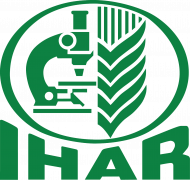Abstract
Arbuscular mycorrhizas (AMs), formed between AM fungi and vascular plants, are a widespread mutualistic symbiosis where fungi colonize root cells, transfer mineral nutrients (mainly phosphate) and, in turn, obtain carbon of a photosynthetic origin. To explore the possible roles played by antioxidant enzymes in the roots and shoots of AM-inoculated potato cultivars, a field experiment was conducted using three potato cultivars (Agria, Santé and Arinda) and two Glomus intraradices levels (0 and 30 g). The leaf and root activities of catalase (CAT), peroxidase (POX) and ascorbate peroxidase (APX) affecting mycorrhizal colonization and potato yield were measured. Under AM inoculation, the three CAT, POX and APX enzymes were induced in both the roots and leaves of all the cultivars. However, the highest increases in POX, APX and CAT activities under AM inoculation were noted in the leaves of Santé and the roots of Arinda. Mycorrhizal colonization was more pronounced under arbuscular mycorrhiza inoculation compared with the control. Yield also increased by 36%, 26% and 20% in Ardina, Santé and Agria, respectively, when they were inoculated with arbuscular mycorrhizas. The results suggest that inoculation of potato cultivars with AM induces antioxidant enzymes and, thereby, higher yields. In addition, induction of enzymes is found to be cultivar-plant-part specific.















